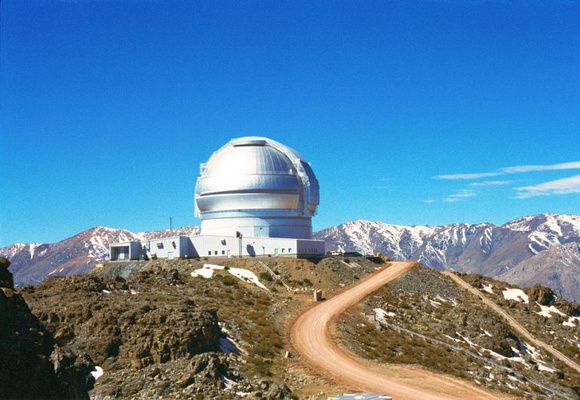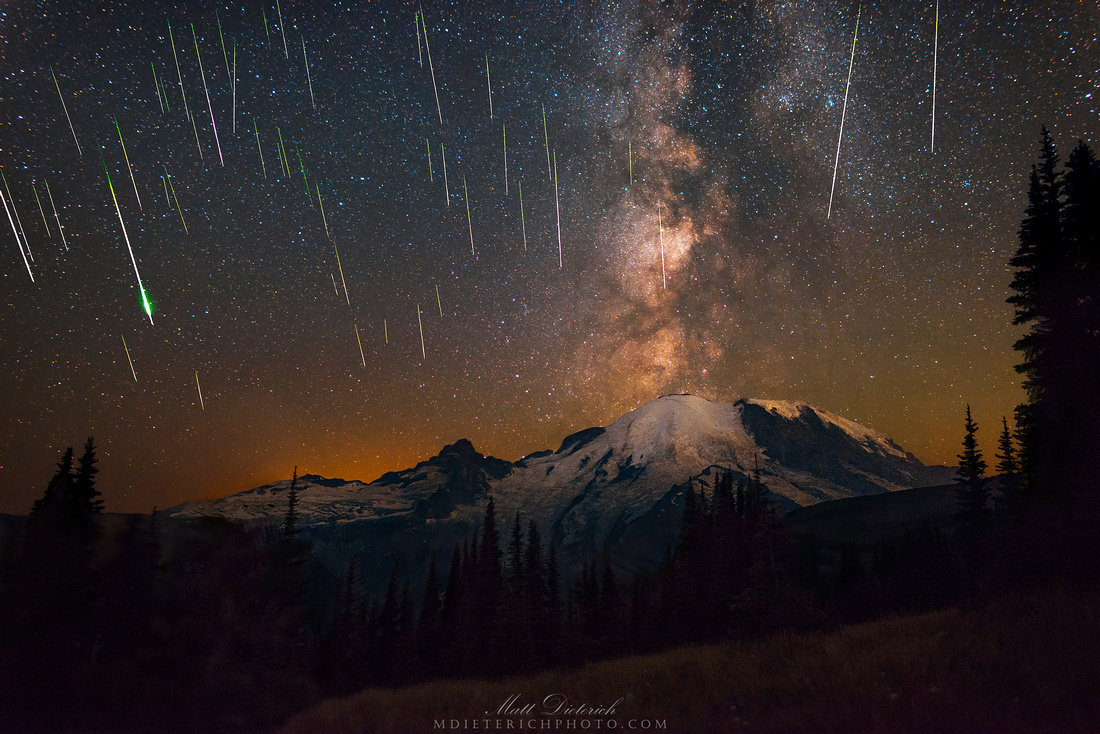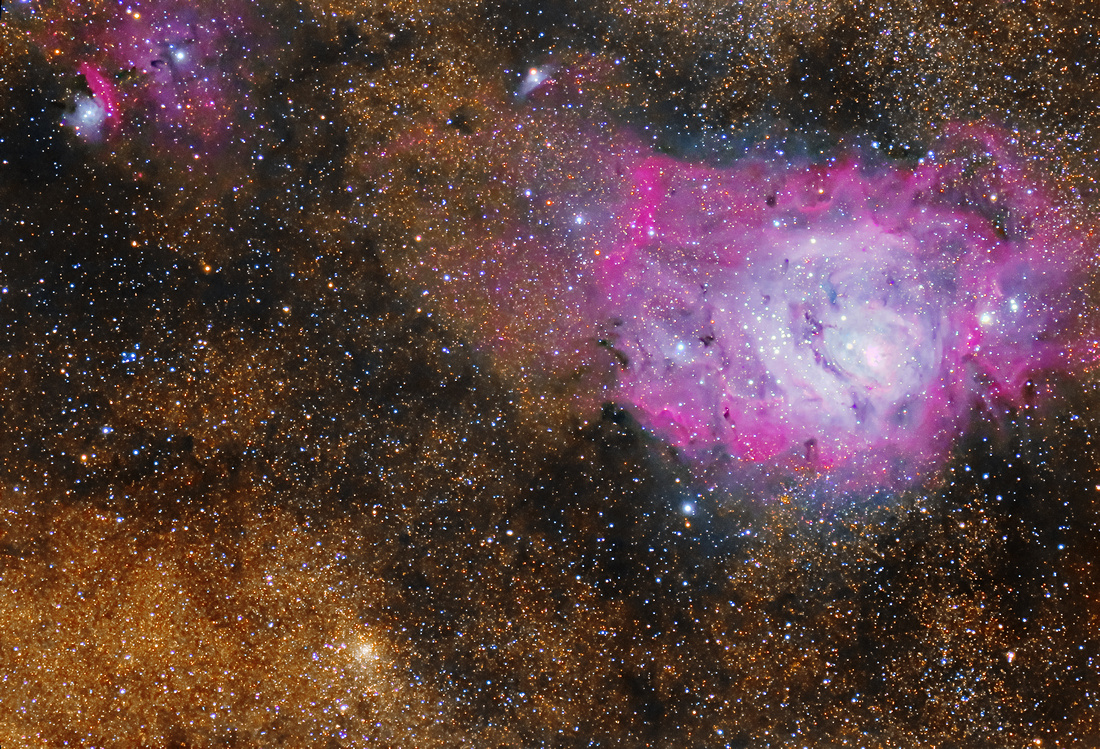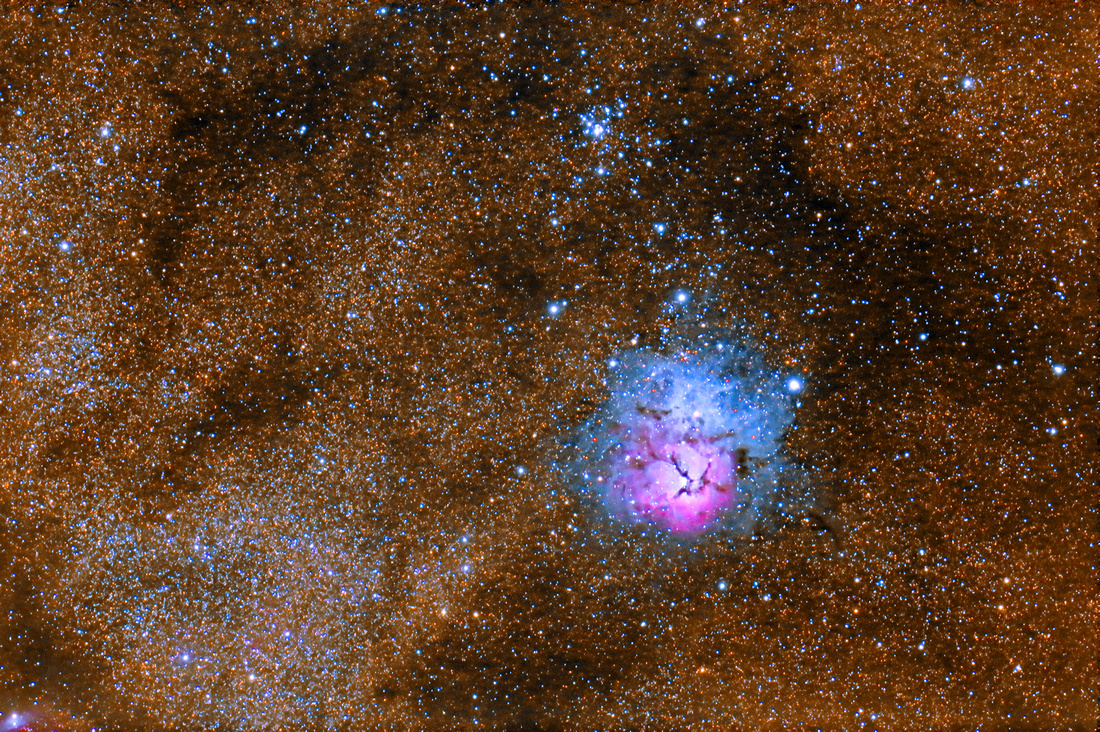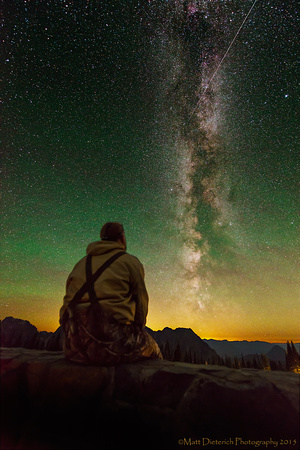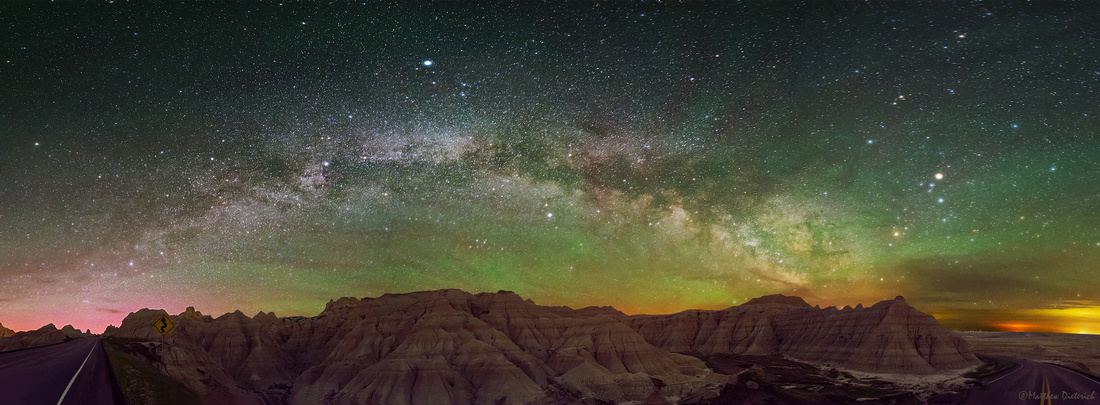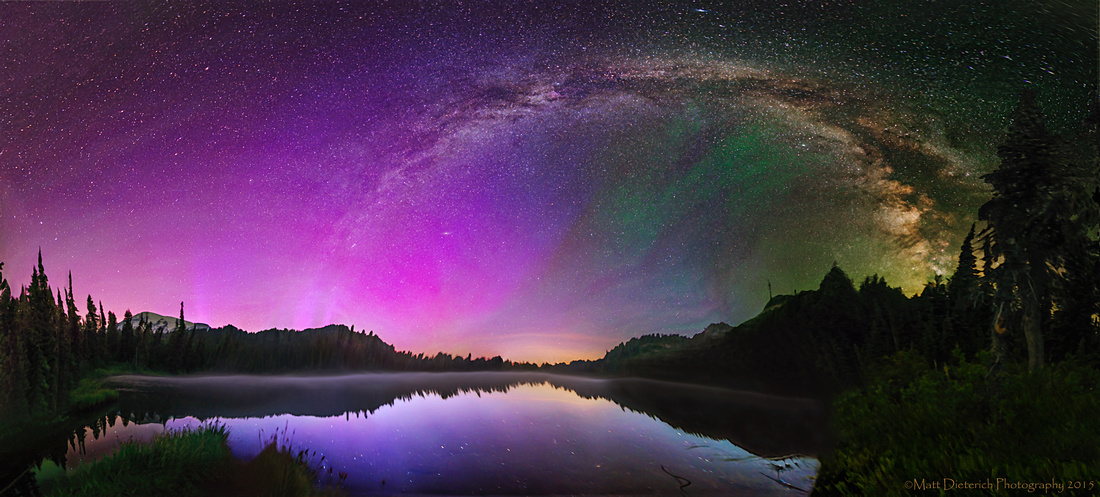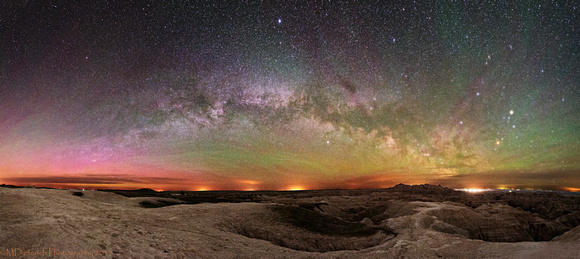I will be traveling with 8 other astronomy educators to visit the world renowned astronomy observatories in Chile from June 16th-28th. We will be learning about the facilities and current research being conducted at these locations. Once we return to the U.S., our duty is to educate schools and communities about these facilities including how to access observatory data and additional resources. Observatories such as these in Chile, are instruments that help us better understand the workings of our universe, which is what thrills me most when educating others about astronomy. My goal is to inspire the next generation of scientists and engineers during my outreach. Above all, astronomy is an unifying language that all humans can connect with. This is truly an experience that I want to build upon and make the most of while at the observatories! Please subscribe to my blog by clicking the RSS button in the top right and tuned for my posts to follow the trip!
We will be visiting the Gemini South observatory near the summit of Cerro Pachon seen above. The beautiful pollution free atmosphere at an elevation of 8,930 ft makes this a perfect site for astronomy!
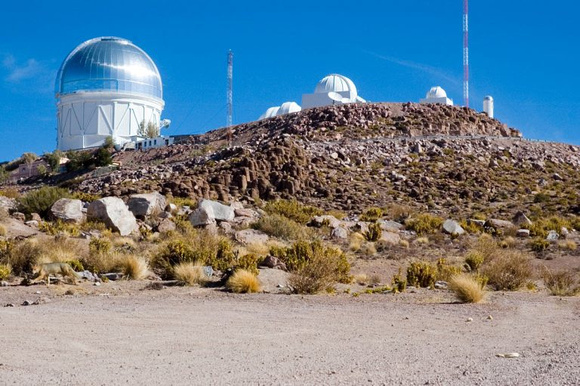 The Cerro Tololo Inter-American Observatory is another site we will visit near La Serena at 7,200 ft elevation. Once again, the dry climate and high elevation make this site ideal for astronomical research!
The Cerro Tololo Inter-American Observatory is another site we will visit near La Serena at 7,200 ft elevation. Once again, the dry climate and high elevation make this site ideal for astronomical research!
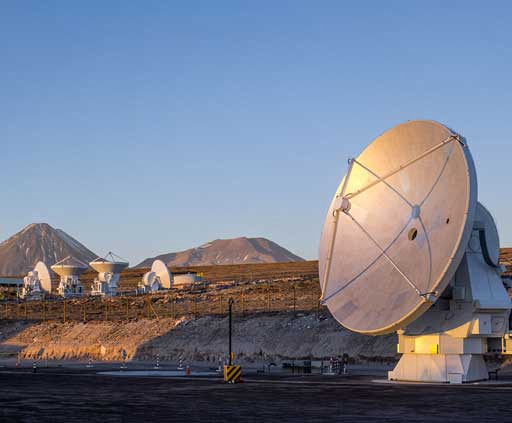 The incredible ALMA array is located at an elevation of 16,500 ft! Fortunately we will visit their lower site at 10,000 ft to acclimate before traveling up to the high elevation site.
The incredible ALMA array is located at an elevation of 16,500 ft! Fortunately we will visit their lower site at 10,000 ft to acclimate before traveling up to the high elevation site.
The 2015 Perseid meteor shower peaked before dawn on Thursday August 13, and what a show it was! With the moon out of the sky very faint meteors could easily be seen from locations away from city lights. The Perseid meteor shower “peaks”, as astronomers call it, when the Earth turns in its rotation to face the comet debris. This occurred in the hours leading up to sunrise Thursday morning and allowed for the most amount of meteors to be seen. Perseid meteors pass through the atmosphere around 60 miles above Earth’s surface at upwards of 130,000 miles per hour and are on average the size of a grain of sand. Perseid meteors can be larger, around the size of a marble, and such rock fragments burn brighter and longer in the atmosphere. The larger Perseids can even illuminate the ground like a flash of lightning if you’re lucky enough to witness one of these “fireballs”!
The timing of the Perseid meteor shower was excellent for me since I was working at Mount Rainier National Park as an astronomy interpretive ranger. Mount Rainer National Park has a beautiful dark sky due to being far from major cities and high elevation. The high elevation where I was observing from (~6,500 ft) made the night sky even more crisp and clear because I was looking through a less thick section of the Earth’s atmosphere compared to at sea level. Between the hours of 2:00 – 4:30 am I counted over 200 Perseid meteors, which means there were over 100 meteors per hour!
During this meteor shower my goal was to take an image of the Milky Way over the summit of Mount Rainier. To accomplish this, I hiked up the trail near Sunrise on the eastside in Mount Rainier National Park. This area afforded me the opportunity to face the camera south with the Milky Way and Mount Rainier aligned in the foreground. I setup my DSLR camera on a tripod and plugged in an intervalometer, which allowed me to take a sequence of images at my desired settings. I used a Nikon D800 with a 24mm lens at F/1.4 and ISO 3200. I continuously took 13 second exposures for over 2 hours and delayed for 1 second between frames so the camera could write the previous image to the memory card. While the camera took the nearly 250 images, I laid down and watched the magic of the Perseid meteor shower unfold before my very eyes!
Once the sequence of images was taken I found that the camera captured around 50 Perseid meteors. From this set of data I wanted to create an image with as many of these meteors as possible. To this end, I used Photoshop to create a composite image with all the meteors. I first used an image of the Milky Way over Mount Rainier to serve as the main image to build upon that was one of the first frames the camera took. To put all the meteors in the sky I had to first manually align each of the 45 images on the main photo’s star field. Aligning each image on the main photo’s star field allowed me to put the meteors in their proper place as they went through the sky. I used Photoshop to create a new layer for each image, then hid the entire layer except for the meteor. I would then brush in the meteor after aligning the star field. I repeated this process for the remaining 44 images. After around 5 hours or so of work the image was complete! This image will help me recall just how wonder the Perseid meteors were this year. I made a lot of incredible memories while working at Mount Rainier National Park, and this image is one of them. Feel free to try this technique for an upcoming meteor shower such as the Leonids and Orionids! Remember though, travel far from city lights if at all possible. Lastly, soak up and enjoy the power and magic of a star filled night sky, especially with friends and family.
I hope you find these tips useful. If you have any questions about this technique please send me an email at [email protected].
Keep looking up!
~Matt
]]>Lifelong interest for the hobby of astronomy commonly begins when we are children. Everything is new and exciting during our impressionable adolescent years, especially the sciences. Sparking the interest for astronomy with our youth is imperative for developing the next generation. This spark for kids can be showing astronomy photographs, letting them peer through a telescope for the first time, or simply taking them outside to point out constellations and planets. Involving our youth in astronomy does not mean they all have to become astronomers or physicists when they grow up. The goal of adolescent astronomy outreach is to instill the power of imagination and curiosity, which can lead them onto a path of discovery throughout their lives.
Recently, I had the opportunity to present an astronomy outreach program to a local group of approximately 50 Cub Scouts. The age of the scouts ranged from 7 to 11 years old, which was important to recognize so I could present information they could understand and learn from. To accomplish this, I decided to focus my program on how interesting and cool space is. Every kid can relate to how cool something is such as dinosaurs, mummies, and best of all, space! The approach I employed was to use my experience as an astrophotographer to engage the Cub Scouts through photography and questioning. These two techniques worked well as they engaged both visual and verbal learning styles throughout the presentation. After the presentation we were fortunate enough to have clear skies that night, so I took the group outside to star gaze.
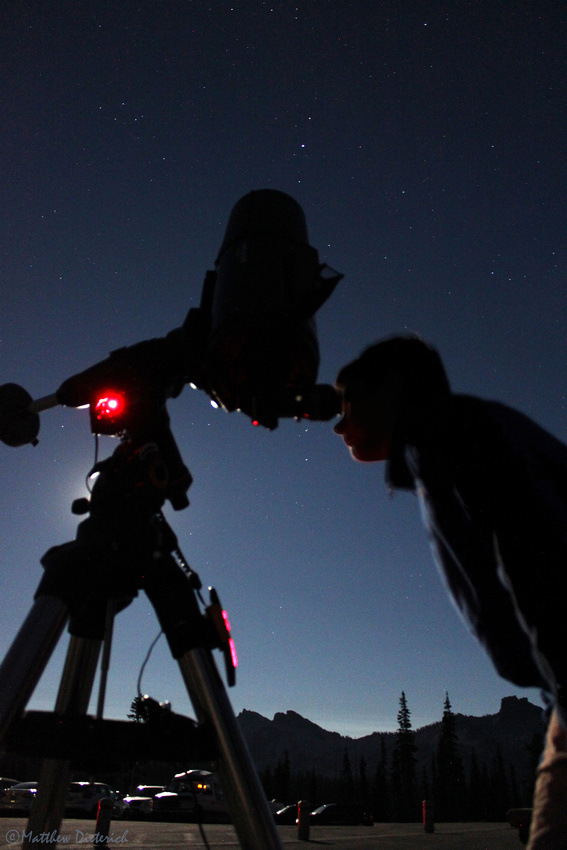
When presenting astronomy outreach material there are numerous factors we need to consider. For example, what is the background of the audience? Is the audience a group of elementary school students, or is it a university level physics class on a field trip? Know your audience and tailor the material to their knowledge level. Moreover, focus on being excited and enthusiastic while presenting. This in vital when working with kids and adults alike. We all can remember the teacher or professor who made learning enjoyable and fun by his unique public speaking abilities and contagious energy for the subject. Rarely do we remember the monotone lecture presentation. If our goal is to change the lives of the audience, we need to present material in an engaging and memorable fashion.
Overall, my astronomy outreach experience with the Cub Scout group was very rewarding. Being able to inspire children about space and science is a passion of mine. Mainly due to the fact that once a kid becomes hooked on science he/she will be asking questions for the rest of their life. Such questions they might be working to answer include: how do we safely land this rocket on Mars and return the crew members safely to Earth, or how can we use what is found in nature to help fight cancer? The future possibilities are endless when it comes to instilling the passion for lifelong learning and questioning in our youth. Won’t you help make a change and promote astronomy to the next generation?
]]>You might have noticed that large cities are set aglow by lights at night, which turns the night sky into an orange orb drowning out fragile star light. This unfortunately, yet reversible downside of cities is known as "light pollution". The next time you are downtown on a cloudless night, look up and see how many stars you can count...5? 20? 30? Depending on the city brightness you may only be able see 20 stars, if not fewer. On the contrary, drive out into the country and you will be overwhelmed with stars on a moonless night. The lack of bright city lights out in the country can make for one memorable night of watching or photographing the night sky. Dark skies out in the country are similar to what our ancestors experienced, thousands of stars strewn across the sky with our Milky Way stretching from horizon to horizon. For more information on light pollution please visit the International Dark Sky website at http://www.darksky.org
While light pollution is the most visible factor changing our view of the night sky based on location, the amount of water vapor present in the atmosphere plays a vital role in determining how "clear" objects in the sky appear. Water vapor in the atmosphere is commonly called "transparency" by astronomers. High water vapor content reduces transparency and low water vapor increases transparency, which is what we want! Imagine swimming in a pool and going under the water, then looking back out through the water. Everything looks distorted and as if it is fluttering around due to what is known as refraction caused by water. Refraction causes light to bend around a medium, such as water in our case (hence why when you put a stick in water it does not look straight anymore, but looks bent!). This is why starlight twinkles in the night sky because of water vapor and temperature changes in the atmosphere. In our analogy the of the swimming pool, the stars would be outside the water (outer space), our water filled atmosphere would be the pool water, and we the observer are at the bottom of the pool looking out through a huge column of water creating distortion. Therefore, in a perfect world we want water vapor to be low in order to experience the night sky where stars are so bright it feels like you can pull them out of the sky. For an interesting article on the effects our atmosphere has on night skies please refer to the article below http://www.skyandtelescope.com/astronomy-resources/transparency-and-atmospheric-extinction/
Water vapor and light pollution can significantly alter our view of the night sky, but one additional key factor is missing and that is elevation above sea level where you are observing from. Traveling to a high elevation location can change our view of the night sky tremendously! Ever notice a trend where professional astronomers build their observatories? Do they place their incredible instruments near large cities at sea level beside oceans? Thankfully not! Observatories are built far from city lights and at very high elevations to reduce the effects of light pollution and atmospheric distortion such as water vapor and temperature gradients. For example, numerous world-class observatories are located at ~14,000 ft elevation on Mauna Kea in Hawai'i and >14,000 ft in the Atacama Desert in Chile. These high elevation locations are far from city lights and also are viewing through less atmospheric distortion, which provides jaw-dropping views of the night sky. For a list of high elevation observatories please see the article below https://en.wikipedia.org/wiki/List_of_highest_astronomical_observatories. Have you ever heard about the numerous telescopes that are orbiting the Earth such as the Hubble Space Telescope or it's upcoming replacement the James Webb Space Telescope? These space telescopes provide the most detailed, clearest, and highest resolution images of our universe because they are not look through a moisture and pollutant laden atmosphere!
In regards to night skies and locations of excellent star-gazing, this summer I have been teaching astronomy to park visitors at Mount Rainier National Park. Although this location creates it's own weather due to the 14,411 ft mountain, there have been a handful of just spectacular nights for star-gazing. Those nights of great transparency and low humidity were absolutely beautiful. Showing guests how our Milky Way actually "pops" from the black sky background is truly amazing. One of those nights I was running the astrophotography setup and we put together this 6 x 2 (12 minutes total) image of the Lagoon Nebula (Messier 8) below. The Lagoon Nebula image was taken using a Canon 6D (non-modified) at ISO 6400 with a 130mm Takahashi F/7.7 refractor on a EM-200 equatorial mount. Another wonderful night of star-gazing allowed the astronomy program visitors and I to capture the Triffid Nebula (Messier 20) seen below the Lagoon picture. Overall, Mount Rainier is truly a spectacular location to refresh and soak in the beauty of mother nature both during the daytime and also at night under the stars!
The Lagoon Nebula (Messier 8)
Experiencing the night sky in a region that might actually scare us with the amount of stars and brightness of the Milky Way, we need to follow three main rules. (1) travel away from light pollution (city lights), (2) travel away from high humidity locations, and (3) gain as much elevation as you can. When we follow these three rules we likely find ourselves near a desert, out in the country, or high up on a mountain with a remarkable night sky few get to experience. What is the darkest place you have been to view the night sky? What was the experience like to you? Please let a description in the comments section below! I'll start, the darkest place I have been to would be Glacier National Park in Montana and I was just amazed at how close the stars appeared due to the high elevation (~5,000-6,000 ft).
As always, thanks for reading and commenting!
~Matt
]]>
The silence I experienced while capturing this photo below at Badlands National Park was truly remarkable. I felt as if I had the entire park to myself, no cars, no noise, just me and thousands of stars...and a few animals or two roaming around I bet =)
Silence can be an unnerving experience and can provoke fear or anxiety. I know it does for me at times. In present day society we are very much accustomed to the fast paced nature of work, school, raising families, etc, where silence is rarely introduced. I picture all the activities in daily life as a delicate juggling act, and when one becomes out of balance the entire cycle can suffer and come tumbling down. There is good news though, we can comeback to ourselves by finding a moment of silence.
How often do we take the time to to sit and reflect, with only natural sounds around us? The bustling sounds we often hear are cities, phones ringing, or the radio and TV. We should challenge ourselves to embrace the silence. Does that mean we have to travel into the middle of the woods, on top of a mountain, or float out into the ocean on an inner-tube? Certainly not! Embracing the silence can be as simple as keeping your radio off in the car, or keeping the TV off at home for a day. Why not try experiencing silence with a friend, or family member? Turn off all distractions and find a quiet place to sit. 5 to 10 minutes is all you need and during that time just follow your breathing by acknowledging that you are breathing in, and acknowledge that you are breathing out. Try that for starters! These acts of restoring the silence and turning down noise is an incredible way to help relax and come back to yourself after a "noise" filled day. Coming back to ourselves allows us become the best versions of ourselves as we are refreshed and feeling alive in the present moment.
I personally challenge you to try driving without the radio on for a day or two, and solely focus on the driving experience. Focus on what you see outside. Try not to focus on your destination as you will lose the enjoyment of the present moment, driving. If we rush to our end point, we might just find that our destination was less enjoyable than the journey itself.
Silence can also be uplifting, refreshing, and spiritual. When there is only silence we must search inside ourselves for answers, inspiration, and strength. We get to know ourselves on a deeper level, and that is incredibly exciting! Are we afraid to discover our true-selves and therefore rely on distractions? Maybe the silent experience that lets you look-inward and feel alive in the present moment is completely different from someone else, which is perfectly normal! Please share below a silent experience you enjoy practicing, or tell us how you felt after keeping the TV or radio off for a few days if you tried that method.
~Matt
]]>
Hours prior to capturing this a gentleman from Germany who attended our night astronomy program asked me for advice on how to take night photos. I showed him a few techniques and we noticed that his camera picked up some beautifully pink aurora from over Mount Rainier.
I packed up my gear after the astronomy program and headed down to the lake where I wanted to capture some gems. This location was wonderful as it contained a view of Mount Rainier, water for star reflections, and a relatively open view of the southern portion of our Milky Way core. I setup my D750 along the path to capture a timelapse video while I worked on the panorama. Here is a star-trails photo I made with the 200 some odd frames of the timelapse video with the D750.
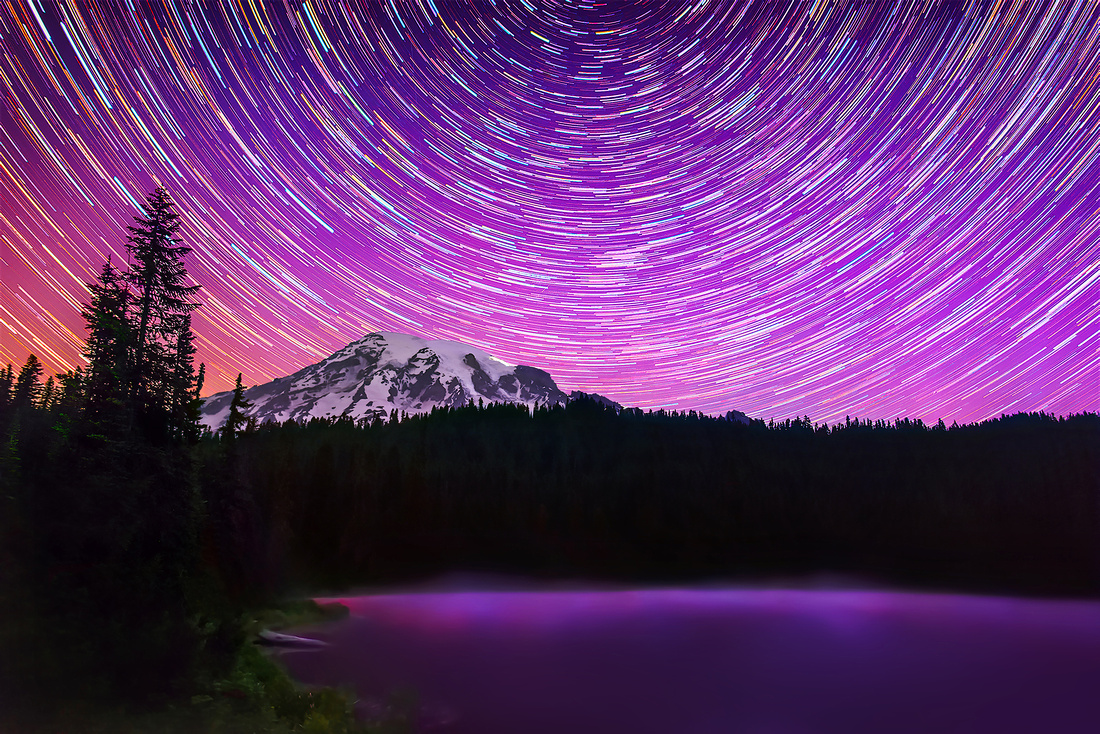 Star trails over Mount Rainier (USPS 2016 NPS Centennial Forever Stamp)To order a limited edition fine-art print of this photo please see the link below and email me for details.
Star trails over Mount Rainier (USPS 2016 NPS Centennial Forever Stamp)To order a limited edition fine-art print of this photo please see the link below and email me for details.
http://www.mdieterichphoto.com/stamp
Object: Star trails and pink aurora over Mount Rainier
Optics: Rokinon 24mm
Mount: Tripod
Camera: Nikon D750
F/stop: F/1.4
Exposure: 220 x 8 seconds to create star trails
ISO: 5000
Mode: RAW
White Balance: Daylight
Filter: None
Conditions: Temp. 50 F
Date: June 22nd, 2015
Location: Mount Rainier National Park, WA
Processing: Photoshop CC
This night was incredibly emotional to me because it was the first time in my life I visibly witnessed an aurora. Although I have captured the aurora in camera before, not ever have I witnessed it with my unaided eye. Cameras are so much more sensitive to color and light at night that aurora can be seen in a photograph, yet invisible to the human yet. The aurora appeared to be black and white in color and as if someone was shining a spot light into the air to the right side of Mt. Rainier (see the columns in the photo). These black and white columns over the course of nearly 5-10 minutes slowly faded as they danced on the horizon. Emotional nights witnessing natural phenomena like these keep me coming back to the night sky, they keep me striving to improve my work, and they keep inspiring me to share my love for connecting with the night sky. To me the night sky is home. The night sky is where my deceased loved ones are and are sharing their energy by sending me natural phenomena to photograph. The experience of feeling comforted and in awe is how I felt at the end of this night. Even if I might not understand fully what is out there in the night sky, I am incredibly humbled knowing that I am just a mere speck in a sea of stars and galaxies and will eventually return home.
Was there a time in your life where you had an emotional connection to the night sky? If so, please feel free to share in the comments section below!
~Matt
]]>A new and exciting aspect for visitors who attend our astronomy programs is that I setup telescope and camera equipment. Visitors then help me chose an object to take a picture of (such as a star cluster, or planetary nebula) and within 30 minutes they have their very own astronomy photo, which I email or use iPhone Airdrop to send directly to their cell phones! Here are the first few photos we took this summer of the Dumbbell Nebula (Messier 27), Hercules Cluster (Messier 13), and the Wild Duck Cluster (Messier 11).
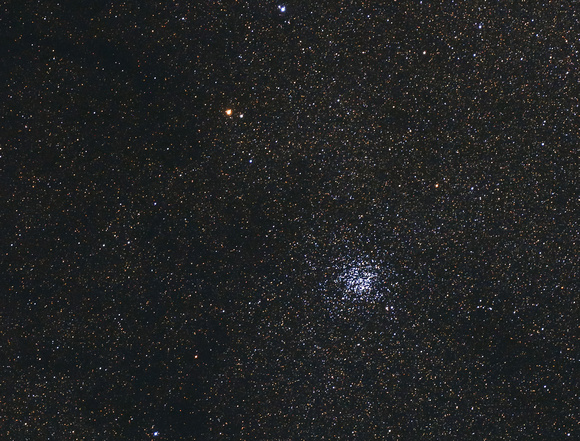 above is the Wild Duck Cluster (Messier 11)
above is the Wild Duck Cluster (Messier 11)
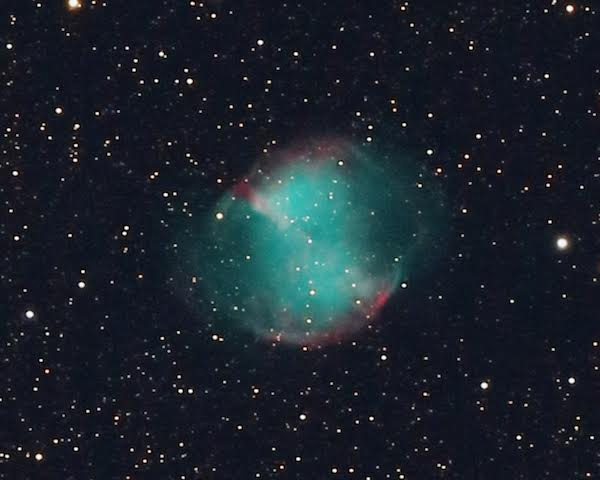 above is the Dumbbell Nebula (Messier 27)
above is the Dumbbell Nebula (Messier 27)
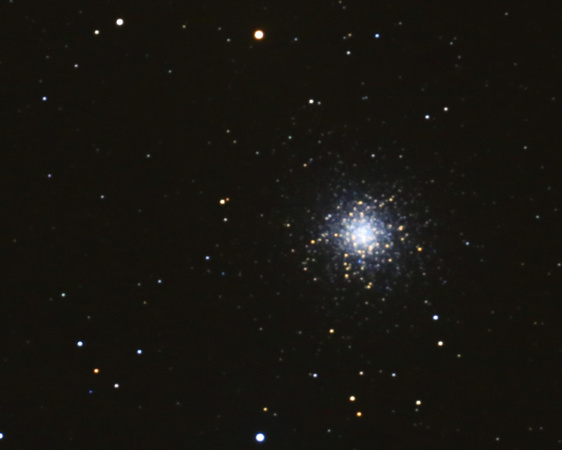 above is the Hercules Cluster (Messier 13)
above is the Hercules Cluster (Messier 13)
Our night sky team promotes the beautiful dark skies at Paradise that we are fortunate enough to have here at Mount Rainier National Park. Below is a very photogenic group that I took a photo of enjoying the Milky Way Galaxy from July 13th =) The park visitors are pointing up at the Milky Way and they were all just amazed at the sight of it.
 Mount Rainier National Park astronomy program visitors on July 13th, 2015
Mount Rainier National Park astronomy program visitors on July 13th, 2015
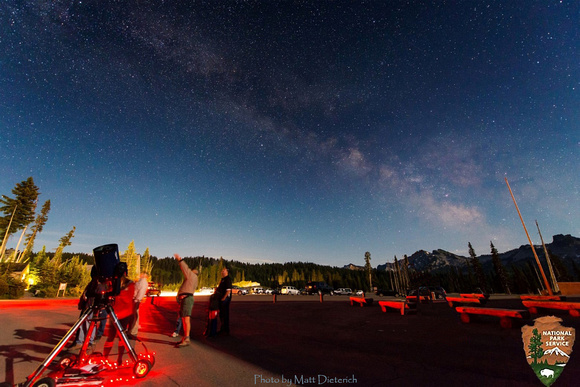 Mount Rainier National Park astronomy program visitors and our Milky Way shaded in blue due to moonlight during June, 2015
Mount Rainier National Park astronomy program visitors and our Milky Way shaded in blue due to moonlight during June, 2015
My goal of promoting astronomy is to generate the interest of children and teenagers so they can become the next supporters and promoters of our beautiful night skies for years to come. We have multiple children operating the telescopes so they can be fully involved in astronomy, and the joy on their faces is priceless.
In closing, enjoying the night skies is part of our heritage and we are losing this fragile resource due to city lights blocking faint starlight, commonly called "light pollution". Visitors to the astronomy program walk away knowing that they can help save our night skies by limiting their usage of lighting at night. More importantly, the visitors frequently compliment how the night sky program was the most memorable aspect about their trip to Mount Rainier. Simply put the night skies are in our souls and viewing a dark star filled sky rejuvenates our body and mind.
~Matt Dieterich
]]>
This image taken from Badlands National Park has aurora (pink in the lower left), light pollution (orange on the horizon), air glow (green across the entire image), and finally the Milky Way hidden behind air glow. I took this panorama May 18th, 2015 with a Nikon D750 and 14-24mm lens at F2.8 at14mm, ISO 6400, and 25 second exposures. No tracking mount was used.
This image has a lot of firsts in it for me. Until this image, I never captured an aurora, or air glow in such a remarkable manner. Being out in the Badlands at night was an experience I recommend everyone try.The calm air and lack of noise made for an incredibly peaceful night under the stars, I felt as if I had the National Park to myself. The emotions I felt after capturing aurora and air glow were of elation and utter respect for our beautiful universe.
~Matt Dieterich
]]>